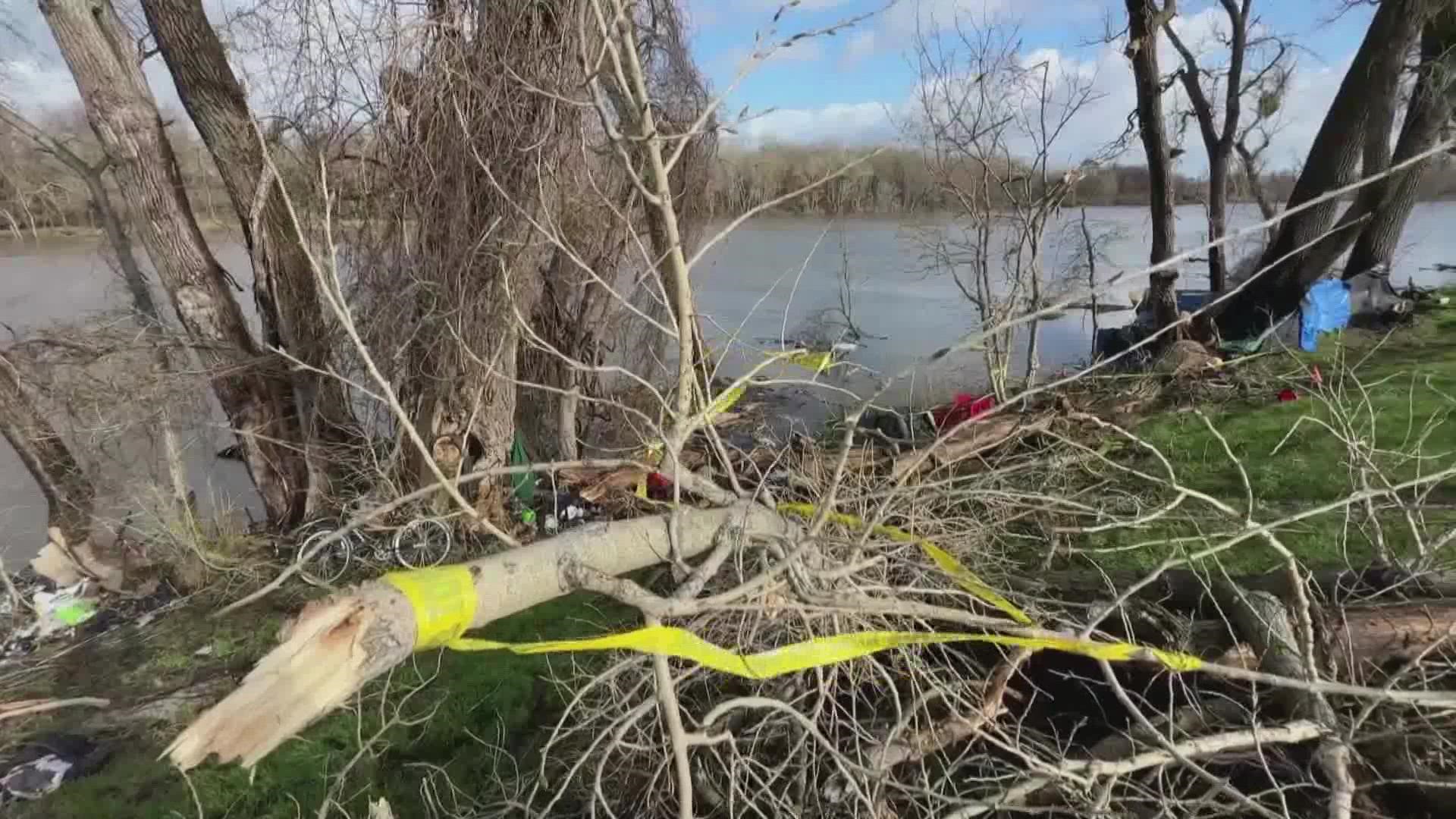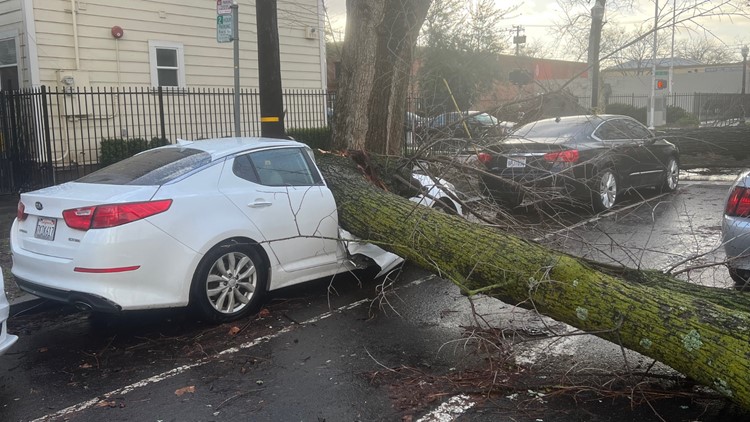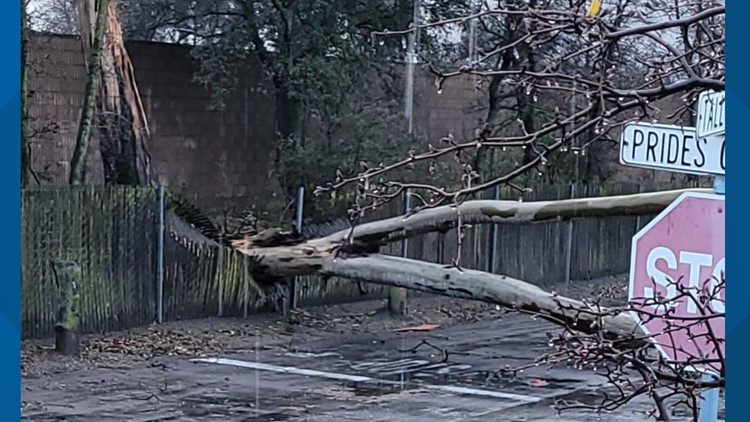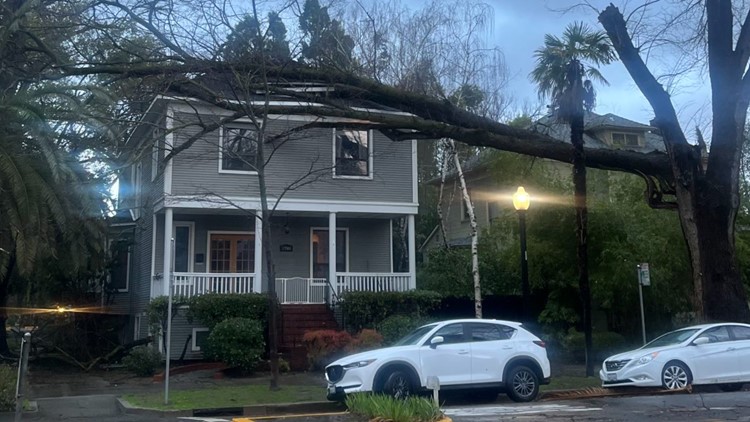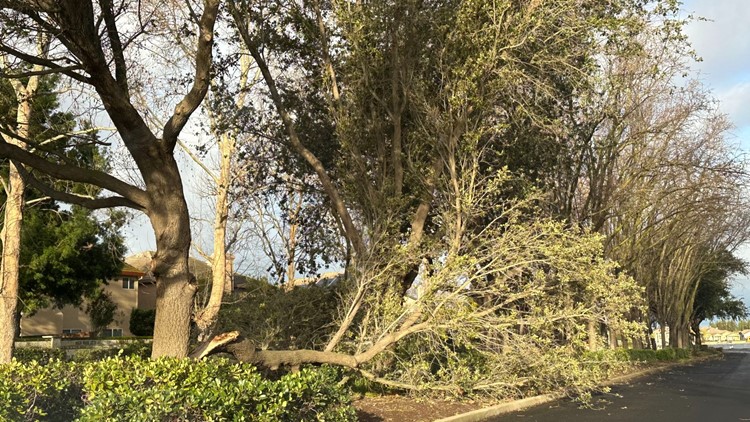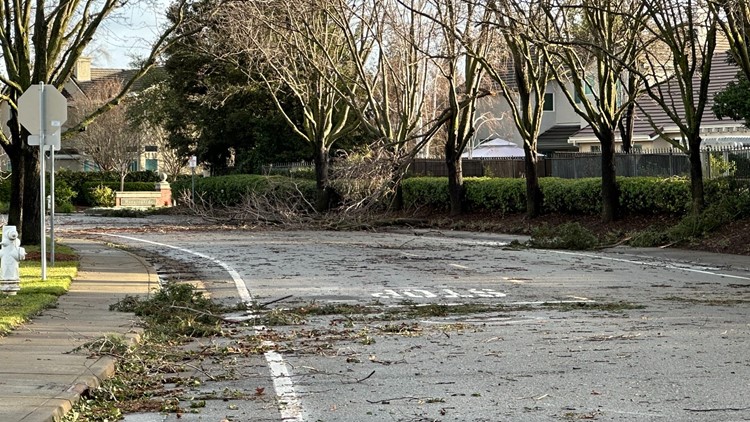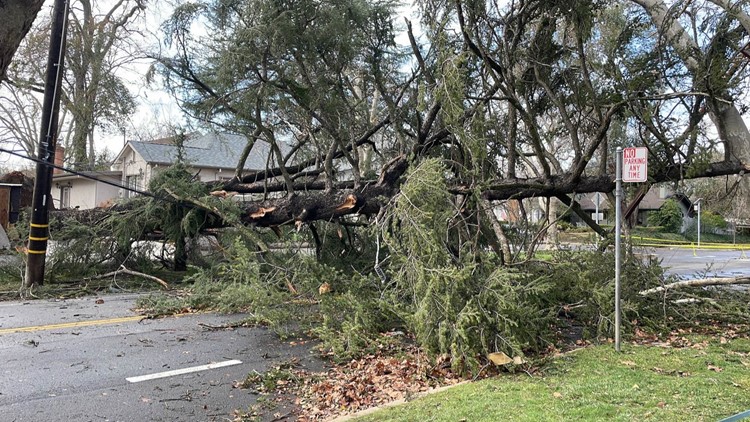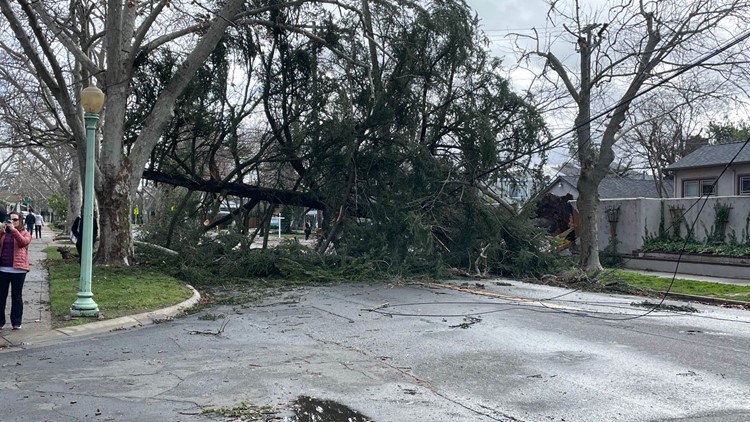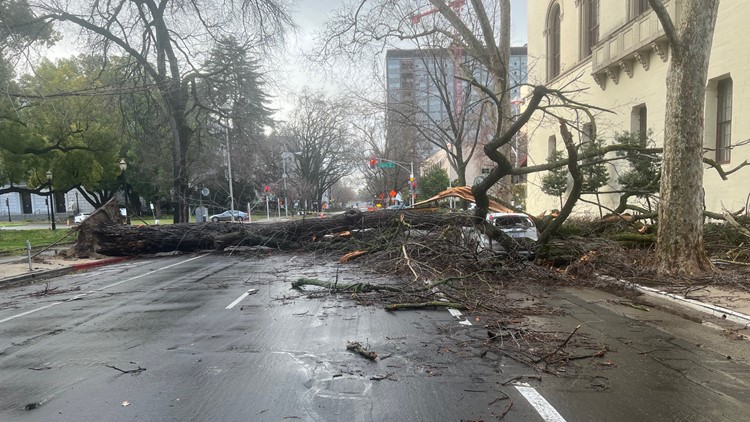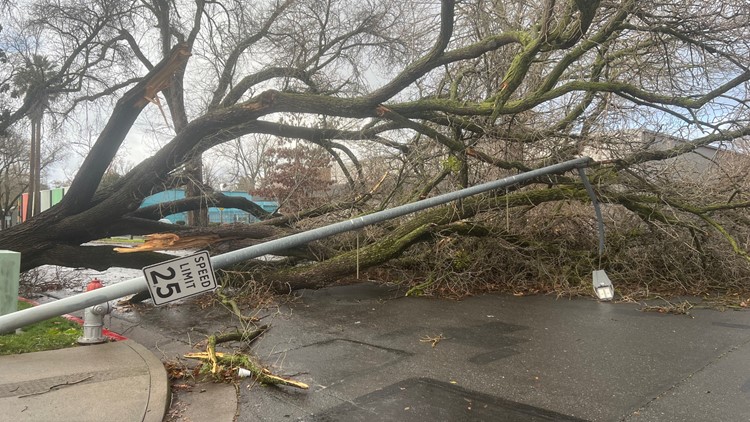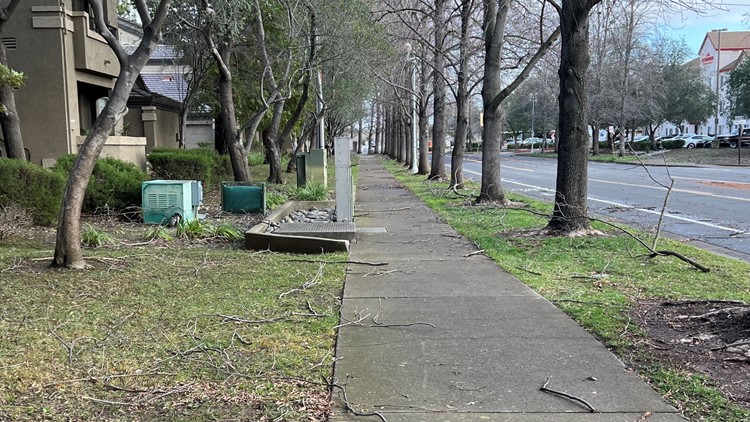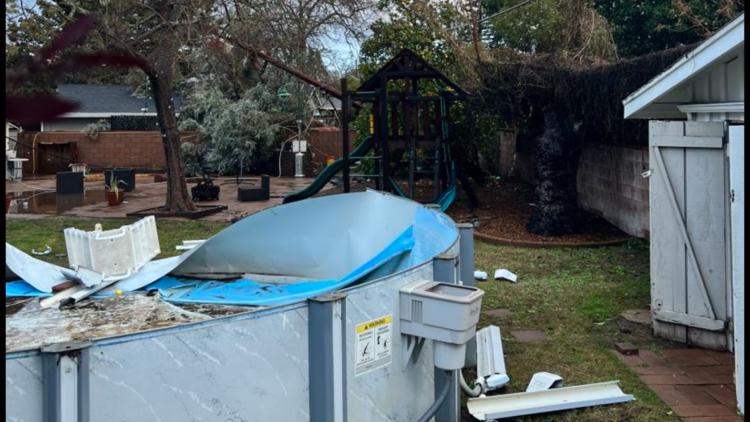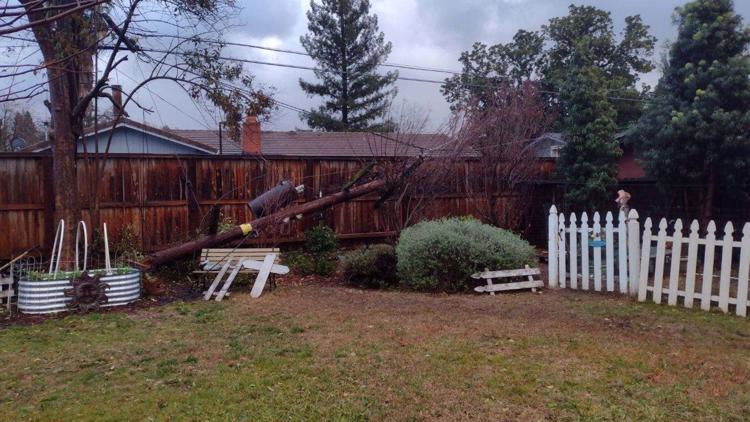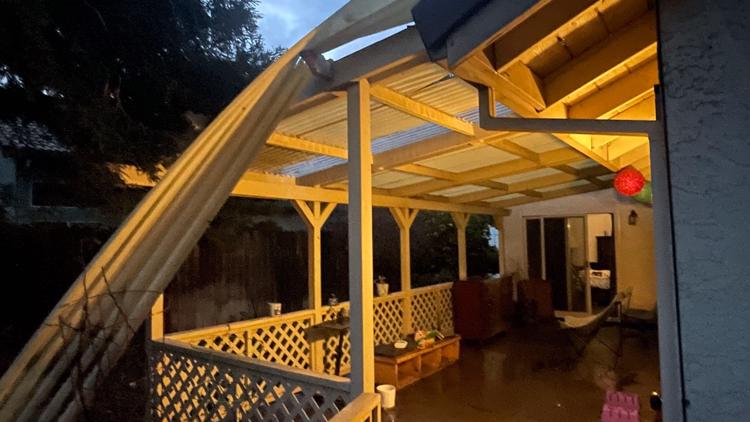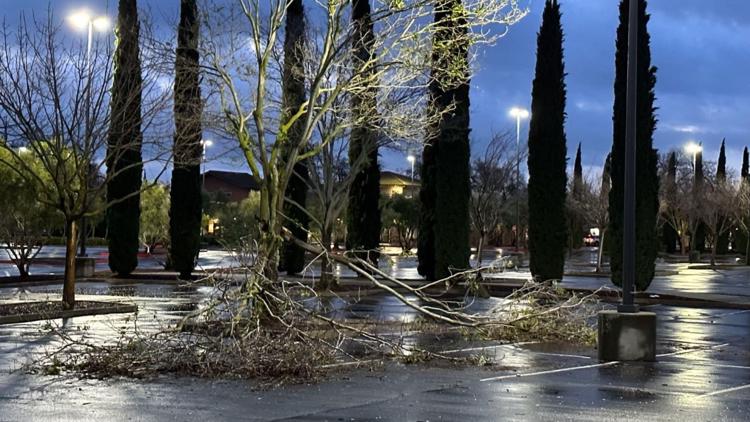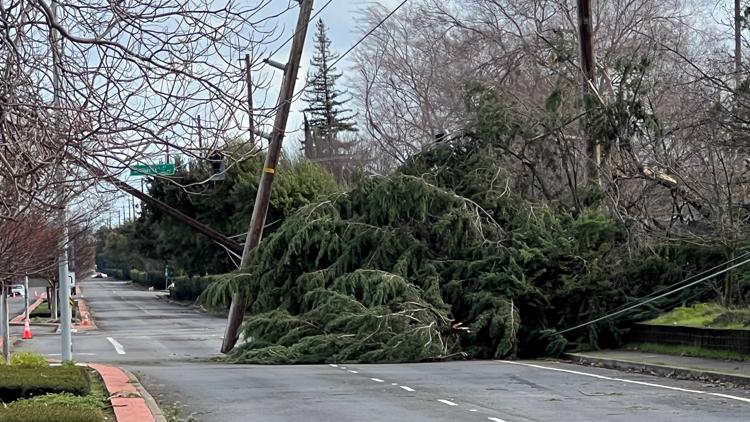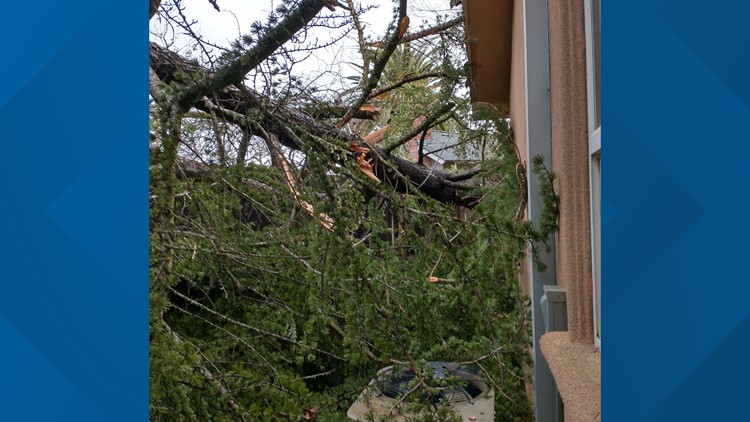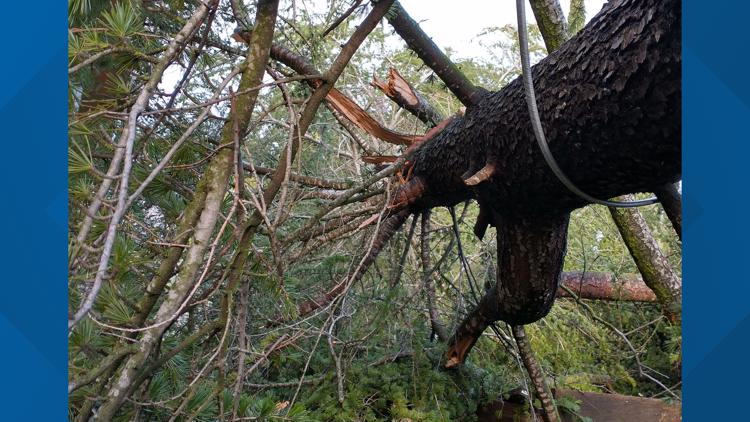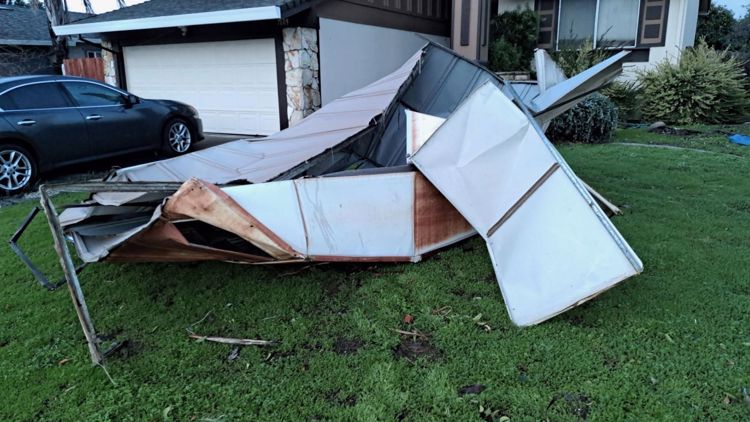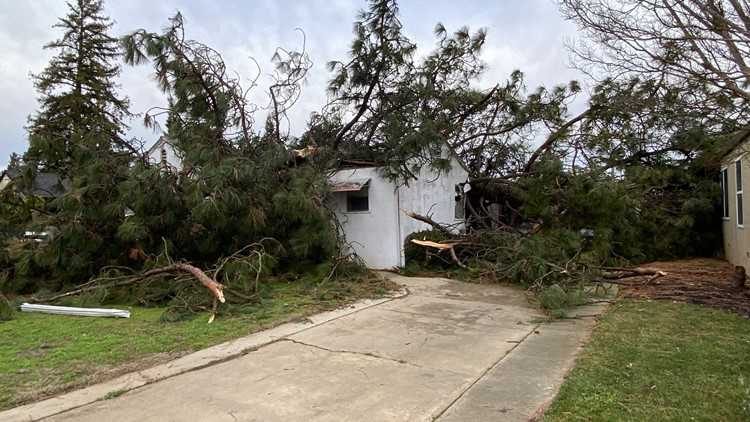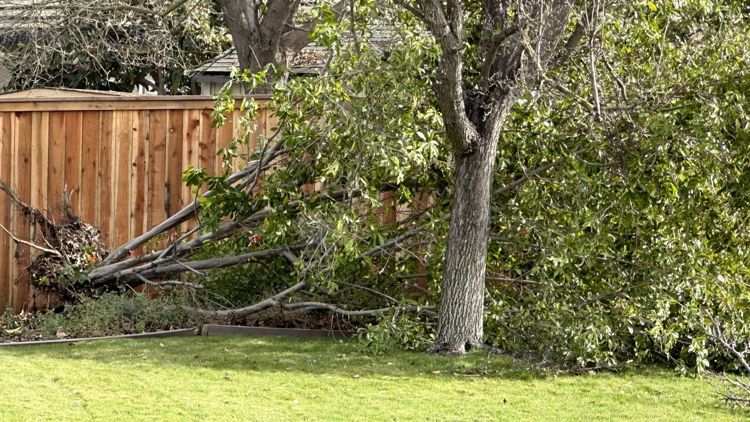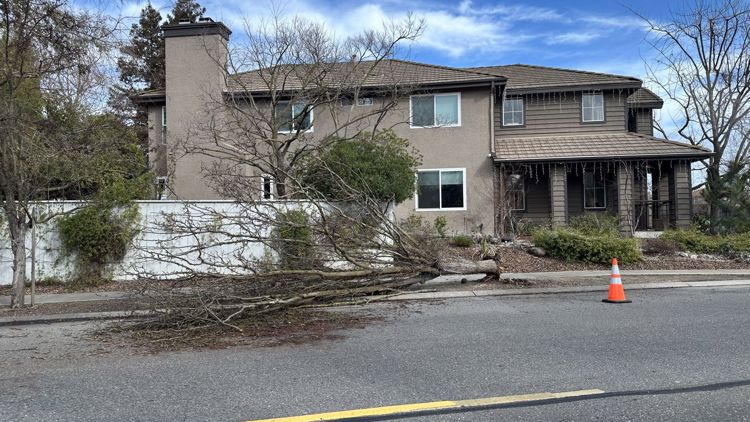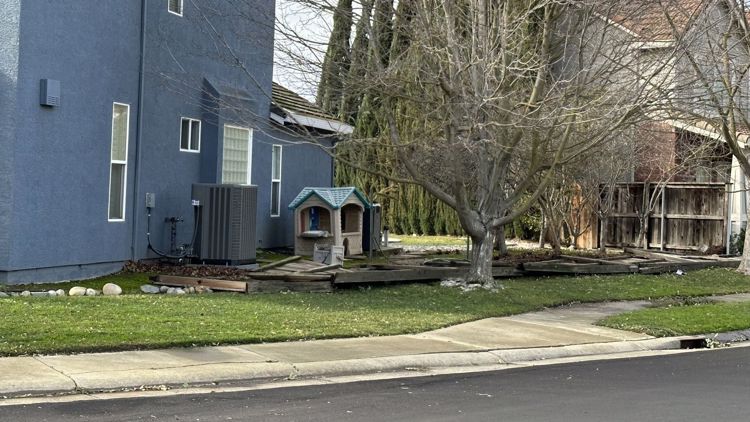LOS ANGELES — Rescuers ended the search for a 5-year-old boy who was swept away by floodwaters in central coastal California while the entire community of Montecito was ordered evacuated Monday as residents grappled with flooding and mudslides as the latest in a series of powerful storms walloped the state.
Tens of thousands of people remained without power, and some schools closed for the day. The number of deaths related to the storms climbed from 12 to 14 on Monday, state officials said.
The search for the boy, who has not been declared dead, was called off around 3 p.m. because the current and rising water levels of the Salinas River were too dangerous for divers, said spokesperson Tony Cipolla of the San Luis Obispo County Sheriff’s Office.
The boy’s mother was driving a white truck when it became stranded in floodwaters just before 8 a.m. near Paso Robles, according to Tom Swanson, assistant chief of the Cal Fire/San Luis Obispo County Fire Department.
Bystanders were able to pull the mother out of the truck, but the boy was carried out of the vehicle and swept downstream, Swanson said. There was no evacuation order in the area at the time. A firefighter discovered one of the boy’s shoes, but crews still had not found the child more than five hours later.
Meanwhile, south of Paso Robles, the entire community of Montecito and surrounding canyons scarred by recent wildfires were under an evacuation order that came on the fifth anniversary of a mudslide that killed 23 people and destroyed more than 100 homes in the coastal enclave.
The National Weather Service reported that at least 8 inches (20 centimeters) of rain fell over 12 hours, with several more inches predicted before the latest storm system moves through an area where roads wind along wooded hillsides studded with large houses. Upscale Montecito is squeezed between mountains and the Pacific and is home to celebrities including Oprah Winfrey, Rob Lowe and Harry and Meghan, the Duke and Duchess of Sussex.
Jamie McLeod's property was under the Montecito evacuation order, but she said there is no way for her to get out with an overflowing creek on one side and a mudslide on the other.
“As of two hours ago, I am trapped,” she said Monday afternoon. “I can’t get off the mountain.”
The 60-year-old owner of the Santa Barbara Bird Sanctuary said one of her employees came to make a weekly food delivery and is stuck too.
McLeod said she feels fortunate because her home sits on high ground and the power is still on. But she said she tires of the frequent evacuation orders since the massive wildfire followed by the deadly landslide five years ago.
“It is not easy to relocate,” said McLeod. “I totally love it — except in catastrophe.”
Santa Barbara County Sheriff Bill Brown said the decision to evacuate nearly 10,000 people was “based on the continuing high rate of rainfall with no indication that that is going to change before nightfall.” Creeks were overflowing, and many roads were flooded, he said.
Northbound lanes of U.S. 101, a key coastal route, were closed, along with several other highways and local roads.
Up the coast, evacuation orders were issued in coastal, woodsy Santa Cruz County for about 32,000 residents living near rain-swollen rivers and creeks, said Melodye Serino, the deputy county administrative officer. The San Lorenzo River was declared at flood stage, and drone footage showed numerous homes sitting in muddy brown water, the top halves of autos peeking out.
A large, muddy slide blocked both lanes of southbound Highway 17, a key but windy route into Santa Cruz from the San Francisco Bay Area. Vehicles were turned back at the summit as crews arrived to clean up.
Despite the deadly nature of storms, residents of tiny, flooded Felton remained calm and upbeat.
Christine Patracuola, the owner of Rocky’s Cafe for 25 years, handed out free coffee to customers whose homes lacked power Monday. Her staff couldn't come in because of closed roads, including a bridge over the San Lorenzo.
“A little coffee can’t hurt anybody," she said. “You can’t really change Mother Nature; you just have to roll with the punches and hope you don’t get swept up into it.”
Nicole Martin, third-generation owner of the Fern River Resort in Felton, said Monday that her clients sipped coffee, sat on cabin porches amid towering redwood trees, and were “enjoying the show” as picnic tables and other debris floated down the swollen San Lorenzo.
The river is usually about 60 feet (18 meters) below the cabins, Martin said, but it crept up to 12 feet (4 meters) from the cabins. Still, Martin said she wasn’t worried — her family has owned the property for about 60 years, and her grandfather checked out conditions Monday and shrugged it off.
In Northern California, several districts closed schools while the California Highway Patrol shared video of large boulders skidding down hillsides to block state roads.
More than 35,000 customers remained without power in Sacramento, down from more than 350,000 a day earlier after gusts of 60 mph (97 kph) knocked majestic trees into power lines, according to the Sacramento Municipal Utility District.
The National Weather Service warned of a “relentless parade of atmospheric rivers” — long plumes of moisture stretching out into the Pacific that can drop staggering amounts of rain and snow. The precipitation expected over the next couple of days comes after storms last week knocked out power to thousands, flooded streets, and battered the coastline.
President Joe Biden issued an emergency declaration Monday to support storm response and relief efforts in more than a dozen counties, including Sacramento, Santa Cruz and Los Angeles.
Gov. Gavin Newsom said on Sunday that 12 people died as a result of violent weather during the past 10 days, and he warned that this week’s storms could be even more dangerous and urged people to stay home. On Monday, the California Governor’s Office of Emergency Services reported two more deaths by falling tree, one of a homeless person in Sacramento and the other of a person inside a home.
The first of the newest, heavier storms prompted the weather service to issue a flood watch for a large portion of Northern and Central California, with 6 to 12 inches (15 to 30 centimeters) of rain expected through Wednesday in the already saturated Sacramento-area foothills.
In the Los Angeles area, there was potential for as much as 8 inches (20 centimeters) of rain in foothill areas late Monday and Tuesday. High surf was also expected on west-facing beaches.
Since Dec. 26, San Francisco received more than 10 inches (25 centimeters) of rain, while Mammoth Mountain, a popular ski area in the Eastern Sierra Nevada, got nearly 10 feet (3 meters) of snow, the National Weather Service said.
The storms won’t be enough to officially end California’s drought, but they have helped.
Daniel Swain, a climate scientist at the University of California, Los Angeles, expects a break in the rain after Jan. 18.
“That is my best guess right now, which is good because it will give the rivers in Northern California, and now in Central California, a chance to come down,” he said.
WATCH MORE ON ABC10 | Rain, wind impacting road conditions across region

